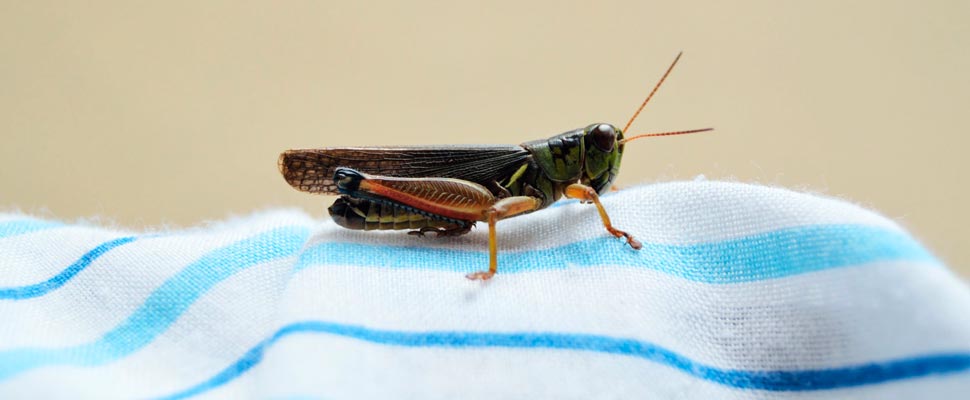Do Ultrasonic Pest Repellers Work?
There are many different kinds of ultrasonic pest repellents, some use single frequencies, while others cycle within a range. Some will only work for rodents, while others can help you deal with insects, too.

Lisa Seward
Escucha este artículo
While there are limitations to the effectiveness of any ultrasonic pest repeller, when used correctly, they can be an effective tool for preventing and eliminating pests.
Do ultrasonic pest repellers work? Here we will first talk about different considerations when using ultrasonic pest repellers.
Usage Considerations
Here are some things to keep in mind when selecting ultrasound pest control devices and for placing them around your home.
-
Selective Application
Depending on the type of pest you’re dealing with, studies have shown that ultrasonic pest repellents have mixed results. In one test by Kansas State University, ultrasonic pest repellers were shown to be effective at repelling crickets, but not so much with ants and spiders.
Bear in mind that ultrasound can be easily blocked by walls and furniture, which may lead to blind spots. So, choose your placements correctly.
-
Interference
The safety and health benefits of ultrasonic pest control over poisons and dangerous traps are clear. Ultrasonic pest control drastically reduces the risk of accidental injury or poisoning by reducing our reliance on those forms of pest control.
Speaking of placement once again, some devices weaken the clarity of phone conversations and hearing aids and even interfere with burglar alarm systems. If you own certain rodent pets, such as rabbits or hamsters, talk with a specialist about ultrasonic pest control systems in these cases – but cats and dogs should be unaffected. So, just keep these possible effects in mind when placing your ultrasound devices around your home.
Prioritize entrances and potential infestation points. Keep ultrasound devices away from small pets and burglar alarms.
-
Do Your Research
Some manufacturers may make claims unsupported by scientific studies, but in the modern market for ultrasonic devices, the possibility of this happening is highly unlikely. In as early as 2001, the FTC began taking steps to make sure claims are properly supported by scientific evidence.
As with any product, it is always best to do a bit of research. Try to find out what pests-specific ultrasonic repeller brands are designed for before. If you’re dealing with a rodent problem, you might need a different ultrasonic device than you would if you were trying to repel mosquitoes.
Be sure to make a careful selection by getting in touch with the manufacturers to learn which model is best for dealing with which pests.
Using Ultrasonic Pest Repellers Properly
While ultrasonic pest repellers are not a magic solution for dealing with any and all pests, when used properly together with traps and poison, ultrasonic pest control can make your overall pest management more effective.
If you are considering adding ultrasonic pest repellents to your pest-control system, follow these guidelines to make the best use of them:
-
Keep trapping. You’ll get the best results from using ultrasonic pest repellents along with trapping and poison. The ultrasonic sound waves will cause rodents and even insects to experience acute distress and discomfort, in response, pests are more likely to scurry right into any traps you’ve prepared for them.
-
Set realistic goals. Don’t expect ultrasonic pest repellers to completely solve your pest problems by themselves. If you’ve set up an ultrasound system to deter rodents, don’t expect it to repel insects as well or at all unless the device has been specially designed to repel certain insect species. Be sure you know what any ultrasound device is intended for.
-
Proper placement. The sound waves emitted from ultrasonic pest repellers are relatively short-range and easily blocked. This can be a good and a bad thing. It’s good because it lets you keep ultrasound out of the parts of your home where you don’t want it. But it’s bad because the careless placement of ultrasound devices can lead to an ineffective ultrasonic pest control system.
Here’s a tip for proper placement: Imagine the ultrasound as light instead of sound. Place a lamp where you would place the ultrasonic device, turn on the lamp and then turn off all the other lights. The beams and shadows from the lamp will give you a rough idea of which areas the sound waves from the device will affect.
Ultrasonic pest control is the ideal option for you if you are looking to set up foolproof pest prevention and if you are dealing with persistent pests that have gotten used to common traps and poisons. Ultrasonic pest control is a powerful tool for enhancing the overall effectiveness of your pest management system. It works best together with traditional methods of pest control by making those other forms of pest control more effective – by disorienting pests into falling for traps and poisons they may have already learned to avoid.





